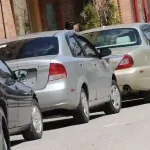- Need Any Help: +1 647-760-5505 or
- info@trubicars.ca

Urban driving presents unique challenges that demand heightened awareness, adaptability, and a commitment to safety. In the bustling cities and towns of British Columbia, traffic congestion, pedestrian activity, and a myriad of potential hazards make defensive driving a critical skill for every driver. At Trubicars, we are dedicated to promoting responsible driving practices and enhancing road safety. In this blog, we’ll delve into the importance of defensive driving in British Columbia’s urban centers, offering insights, tips, and strategies to help you navigate city streets with confidence.
Defensive driving is a proactive approach to operating a vehicle, with the primary goal of preventing accidents and avoiding potential hazards. It involves being vigilant, anticipating the actions of other road users, and making informed decisions to reduce risks. In urban environments, where traffic is often dense and unpredictable, defensive driving becomes even more crucial
Urban centers in British Columbia can experience heavy traffic congestion, particularly during peak hours. Defensive driving strategies for managing congestion include:
Urban areas are bustling with pedestrians, including pedestrians crossing streets, using crosswalks, or walking along sidewalks. Defensive driving near pedestrians involves:
Intersections in urban areas can be complex and pose a significant risk for accidents. Defensive driving at intersections includes:
Lane changes in heavy urban traffic require caution and awareness. Defensive driving for lane changes involves:
Urban centers can present unexpected hazards, from construction zones to potholes. Defensive driving in these conditions includes:
Urban driving requires your full attention. Avoid distractions such as texting, talking on the phone, or fiddling with in-car entertainment systems. Keeping your focus on the road and surrounding traffic is a fundamental aspect of defensive driving.
British Columbia’s urban centers experience a range of weather conditions. Be prepared for rain, snow, and fog, and adjust your driving speed and behavior accordingly. Maintaining a safe following distance is especially critical in adverse weather.
Defensive driving is not just a skill; it’s a mindset that can make a significant difference in your safety and the safety of others on the road. In British Columbia’s urban centers, where traffic complexity and density are high, defensive driving becomes even more critical. At Trubicars, we encourage all drivers to adopt defensive driving techniques and prioritize safety. By being vigilant, adaptable, and responsible, you can navigate urban streets with confidence, reduce the risk of accidents, and contribute to safer roads for everyone. Remember, every defensive action you take on the road is a step towards a safer and more enjoyable driving experience in British Columbia’s vibrant urban centers.

 March 9, 2025 by
March 9, 2025 by Trubicars
Trubicars
 January 16, 2025 by
January 16, 2025 by Trubicars
Trubicars
 January 16, 2025 by
January 16, 2025 by Trubicars
Trubicars
Once you acquire the knowledge provided in
those tests, you are ready to pass the test,
for the first time.
